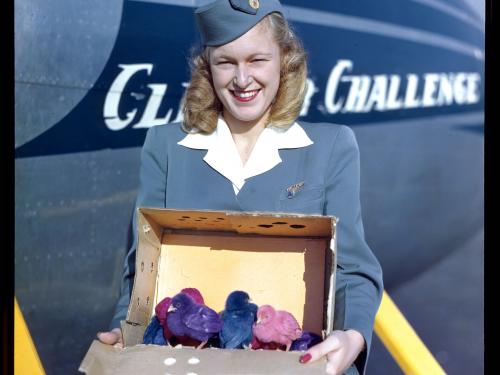
Stories of daring, stories of technological feats, stories of prevailing against the odds ... these are the stories we tell at the National Air and Space Museum. Dive in to the stories below to discover, learn, and be inspired.
Showing 631 - 640 of 698

July 30, 2011
During the past two years, it has been my privilege to work closely with the curatorial staff of the National Museum of African American History and Culture (NMAAHC) to locate an aircraft with a lineage tied directly to the Tuskegee Airmen. We were fortunate enough to accomplish the mission that will culminate in the acquisition of a PT-13 Stearman that flew at Moton Field, Alabama, during WW II—the home of the Tuskegee Airmen.

July 21, 2011
July 21, 2011, marks the ninetieth anniversary of the sinking of the captured German battleship Ostfriesland by the First Provisional Air Brigade of the U.S. Army Air Service. This unit was commanded by Brig. General William “Billy” Mitchell, one of the most controversial figures in the history of air power in the United States.

June 24, 2011
Early in June, staff of the Paul E. Garber Preservation, Restoration and Storage Facility slowly and carefully moved the center section of the Horten H IX V3 all-wing jet fighter from storage into the restoration and preservation shop.

June 09, 2011
When I went in for my interview at the National Air and Space Museum, I learned that I would be helping plan a family day. Not just any family day – this was a one-time event celebrating the 150th anniversary of the Union Balloon Corps.

May 23, 2011
How do the National Air and Space Museum and the Civil War intersect? Come find out as we tell the story of the Union Balloon Corps founded in June 1861 by President Abraham Lincoln. 150 years ago next month Thaddeus Lowe demonstrated ballooning to President Lincoln on a spot just north from where the Museum now stands on the National Mall.

May 10, 2011
Last week the Smithsonian Institution hosted the state Teachers of the Year, who were in town for their annual visit to the White House.

May 06, 2011
May 6th marks the anniversary of the tragic end of the airship Hindenburg, destroyed by fire as it came in for a landing at the Lakehurst Naval Air Station, New Jersey, in 1937. Last year, to commemorate the anniversary, we posted the story of Anne "Cookie" Chotzinoff Grossman, who, on October 9th, 1936, spotted the Hindenburg in flight from her Connecticut schoolyard. She took off in hot pursuit along with her brother Blair, but the giant airship got away from them; Cookie and Blair trudged back to school, and Cookie was made to write “I will not follow the Hindenburg” on the blackboard a hundred times.

April 22, 2011
Why is the smiling Pan American Airways flight attendant holding a box of baby chicks, and why have the chicks been dyed in festive colors?

April 19, 2011
Things such as the Hope Diamond, the Star Spangled Banner, the Lansdowne portrait of George Washington, and Charles Lindbergh’s Spirit of St. Louis airplane are good examples—one-of-a-kind items, familiar to all, and widely known to reside at the Smithsonian. Also in this subset of signature objects is one of the most significant in the entire Smithsonian collection—the Wright Flyer, the world’s first airplane.

March 15, 2011
As we begin to take occupancy of our new home in the Steven F. Udvar-Hazy Center’s new wing, and begin the process of outfitting the Mary Baker Engen Restoration Hangar, we are faced with the daunting task of moving all of our equipment into the new spaces and setting up an environment which will be favorable to the preservation and restoration of our priceless artifacts for decades to come. This is likely to be a lengthy process but we have begun to deliver selected artifacts so that when the viewing area becomes accessible, visitors will be able to see examples of our gems in the rough. Each of these aircraft has been in storage at the Paul E. Garber Facility in Suitland, Maryland for years, where the Museum's restoration work had taken place for decades. These aircraft are seldom seen by the public, and are all in need of preservation or restoration treatments.
